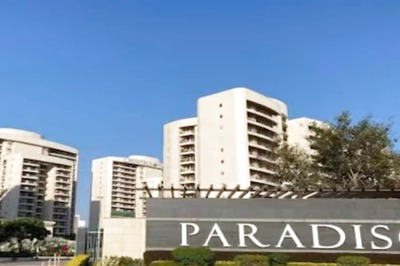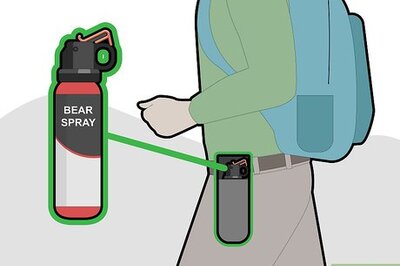
views
Two NASA astronauts completed a 6-1/2 hour spacewalk on Thursday to replace a faulty antenna on the International Space Station, a mission NASA said carried slightly higher risk posed by orbital debris left from a Russian missile test weeks ago.
Astronauts Thomas Marshburn and Kayla Barron exited an airlock of the orbiting research lab some 250 miles (400 km) above Earth to begin their work at 6:15 a.m. Eastern time (1115 GMT), an hour ahead of schedule.
The “extra-vehicular activity” (EVA) followed a 48-hour delay prompted by a separate orbital debris alert – believed to be the first such postponement in more than two decades of space station history – which NASA later deemed inconsequential.
The origin of the newly detected debris was left unclear by NASA. A spokesperson said there was no indication it came from fragments of the defunct satellite that Russia blew to pieces https://www.reuters.com/world/us-military-reports-debris-generating-event-outer-space-2021-11-15 with a missile test last month.
Thursday’s outing was the fifth spacewalk for Marshburn, 61, a medical doctor and former flight surgeon with two previous trips to orbit, and a first for Barron, 34, a U.S. Navy submarine officer and nuclear engineer on her debut spaceflight for NASA.
“It was awesome,” Barron told Marshburn afterward.
During the spacewalk, they removed a defective S-band radio communications antenna assembly, now more than 20 years old, and replaced it with a spare stowed outside the space station.
The space station is equipped with other antennae that can perform the same functions, but installing a replacement system ensures an ideal level of communications redundancy, NASA said.
Marshburn worked with Barron while positioned at the end of a robotic arm maneuvered from inside by German astronaut Matthias Maurer of the European Space Agency, with help from NASA crewmate Raja Chari.
The four arrived at the space station Nov. 11 in a SpaceX Crew Dragon capsule launched from the Kennedy Space Center in Florida, joining two Russian cosmonauts and a NASA astronaut, Mark Vande Hei, already aboard the orbiting outpost.
Four days later, an anti-satellite missile test conducted without warning by Russia generated a debris field in low-Earth orbit, forcing the seven ISS crew members to take shelter in their docked spaceships to allow for a quick getaway until the immediate danger passed, NASA said.
The residual cloud of debris from the blasted satellite has dispersed since then, according to Dana Weigel, NASA deputy manager of the ISS program.
NASA has calculated that remaining fragments continue to pose a “slightly elevated” background risk to the space station as a whole, and a 7% higher risk of puncturing spacewalkers’ suits, as compared to before Russia’s missile test, Weigel told reporters on Monday.
NASA determined those risk levels fall within an acceptable range and moved ahead with preparations for a spacewalk on Tuesday as originally planned, only for mission control to delay the EVA mission hours before it was to start.
The operation was postponed after NASA received notice from U.S. military space trackers warning of a newly detected debris-collision threat. NASA concluded later there was no risk to spacewalkers or the station after all, and the antenna replacement was rescheduled for Thursday morning.
Thursday’s exercise marked the 245th spacewalk in support of assembly and upkeep of the space station, and the first on record delayed due to a debris alert, NASA spokesperson Gary Jordan said.
Disclaimer: This post has been auto-published from an agency feed without any modifications to the text and has not been reviewed by an editor
Read all the Latest News here




















Comments
0 comment